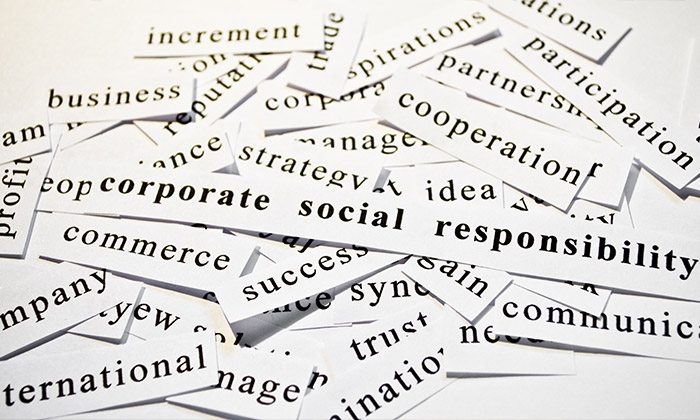Corporate social responsibility (CSR) and sustainability have been at the forefront of most companies’ agendas for quite some time – it’s no longer a “nice to have” but a “need to have.”
The reality of business today is that clients have customers who want to work with companies that share their values regarding sustainability. At the end of the day, it’s your responsibility to deliver products and services in a manner consistent with that wish.
Achieving this is certainly a large undertaking, but aside from extensive volunteer programs and reducing your carbon footprint (though that’s still a big part of it,) for CSR and sustainability programs to really resonate – and enhance not only yours but your clients’ business (and bottom line) – you need to institute a cultural change from the inside out.
People
It goes without saying that a key component of any sustainability mission should be to nurture a corporate culture with high ethical standards. All employees must buy into their organization’s ethical standards and in turn, managers need to appropriately communicate expectations to every employee. Living by these values every day helps you create a positive work environment that is focused on clients, excellence, leadership, integrity and teamwork.
Taking things a step further, maintaining a culture that values health and safety education, as well as skill development, is critical to reducing the potential for accidents and keeping incident rates low, while at the same time increasing employee satisfaction. By taking the time to regularly review employee training and development needs, you help ensure your workforce is equipped with the know-how they need to reach their full potential. Educational courses should cover topics such as health and safety practices, ethical conduct, security awareness and instruction on job-specific skills.
Process
It is now a strategic priority to identify and propagate effective, “lean” processes and initiatives throughout your organization to promote the efficient use of materials and to reduce waste. Aiming for global process excellence can include collaboration across all of your organization’s regions and teams – and your external partners – to introduce standardized processes by identifying best practices. In fact, collaboration should not be overlooked.
Susan McPherson, CEO of McPherson Strategies, recently wrote in Forbes that, “Most companies understand that a collaborative approach across departments is necessary for CSR success. The smartest companies also know that collaboration outside of the organization is critical.”
My company experienced a great example of this. We have a facility in the Netherlands that developed and utilized business-to-consumer (B2C) processes that were soon recognized as being best-in-class. That success was shared – and as a result – that process improvement has been deployed across the globe. This type of standardization increases the competitiveness and sustainability of various company locations by eliminating waste and optimizing resource utilization on items such as labor and materials.
Payoff
Partnerships between a company and its clients now extend deeper into the realm of sustainability than ever before. Whatever your industry, it’s your job to develop creative solutions that reflect the ethics and the image that clients wish to project to their customers.
In my particular industry, supply chain and logistics, one of my clients from a major electronics firm challenged us to identify ways to reduce greenhouse gas (GHG) emissions and redesign product packaging using sustainable materials. At the same time, the customer sought to increase the efficiency of loading pallets of its products and reduce shipping, freight and logistics costs.
A team of our engineers conducted an in-depth supply chain analysis to determine the most effective sustainable approach. By analyzing the amount of GHG emissions resulting from various packaging types, then redesigning the product packaging used for hard drives, circuit boards, keyboards and other components, the customer was able to realize savings of more than $350,000 in packaging materials, with 74,000 cubic feet removed from packaging and 88,000 pounds of packaging eliminated.
It’s clear that CSR is here to stay, and the possibilities are endless. Instilling a culture of sustainability – encompassing environmental performance, social awareness and sound governance – starts from within your own organization.
This article was taken from here.

